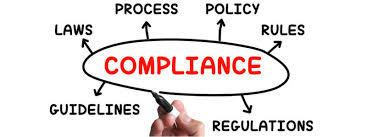The Challenge of Healthcare Compliance Programs (Part I of II)

If you are a compliance officer for a healthcare provider (e.g. hospital, HMO, skilled nursing facility, hospice center), you must sometimes feel that no one understands or feels your pain. When you consider the number and extent of risks, it can be mind-boggling. I am sure there are times that compliance officers in the healthcare industry look wistfully or even with envy at a compliance position at a global manufacturing company.
Looking back in time, however, the compliance field owes a lot to the healthcare industry. In the 1990s, there was a dramatic explosion in the industry in response to aggressive federal enforcement programs and increasing regulation. All of a sudden, compliance officers who sat in the backrooms of legal departments were “volunteered” to address proactive compliance. Federal regulators pushed the compliance function to assume a much larger role at healthcare companies and to come out from under the shadow of legal departments and play a frontline role in mitigating risks.
There really were four significant trends that occurred at this time to move compliance programs into a new era.
First, in response to consumer demands, rising prices, and increasing regulation, healthcare companies faced exponentially increasing risks. Healthcare costs rose and hospitals and doctors were accused of gouging consumers and unfairly denying services through HMOs and insurance restrictions. Consumer litigation claims against healthcare providers and insurance companies escalated.

Second, the Justice Department increasingly relied on criminal prosecutions of companies and individuals to fight against fraud and circumvention of government regulations. In response to regulatory schemes aimed at constraining federal healthcare programs, healthcare companies and physicians who violated detailed regulatory requirements were subject to criminal prosecution rather than civil or regulatory enforcement.
Third, the False Claim Act became an enforcement staple through the efforts of whistleblowers seeking payoffs under the qui tam provisions. Relying on private enforcement efforts and investigations, government prosecutors were able to intervene and develop a steady diet of significant FCA cases that spurred more companies to design and implement effective compliance strategies.
As the regulatory frameworks became more complex, and as abuses were called out, a robust regulatory enforcement regime through the HHS Office of Inspector General grew. The force behind the HHS-OIG multiplied with more regulations, additional enforcement needs and development of tools such as Corporate Integrity Agreements.
Given all of these trends and with a public spotlight on the industry, healthcare companies quickly realized that they had only one option – design and implement robust proactive ethics and compliance programs.
Well, I wish I could say this was then the happy ending. Unfortunately, I cannot. These trends have continued unabated, and if anything, companies face even more significant enforcement risks. In reality, it is difficult for compliance to keep up with the multiplying risks, increasing regulation, and aggressive criminal and civil enforcement programs, along with consistent large recoveries in FCA cases fueled by whistleblower incentives.
The passage of Obamacare has imposed more regulations, raised more risks and expanded the areas, yet again for potential criminal prosecutions and FCA enforcement. The Affordable Care Act also included a wish-list of prosecutor-requested revisions to criminal and civil statues designed to enhance prosecutors’ ability to impose increasing fines and penalties against healthcare companies and individuals.

As the federal government assumes more responsibilities for oversight of our healthcare industry, companies and individuals can expect these trends to continue. Healthcare fraud continues to grow; the current estimate is that annually healthcare fraud costs taxpayers at least $100 billion. Every dollar spent by the federal government to fight fraud pays for itself multiple times over. For prosecutors and law enforcement, the only constraint is access to resources needed to investigate healthcare criminals.
Federal healthcare fraud occurs at dizzying rates. Likewise, private insurance companies are experiencing the continuous growth of fraud. The healthcare industry is difficult to regulate and proactive compliance programs struggle to keep up to prevent waste, fraud and abuse. As the old adage goes, when there is money to be gained, you will find the usual band of crooks and fraudsters feeding at the trough.















